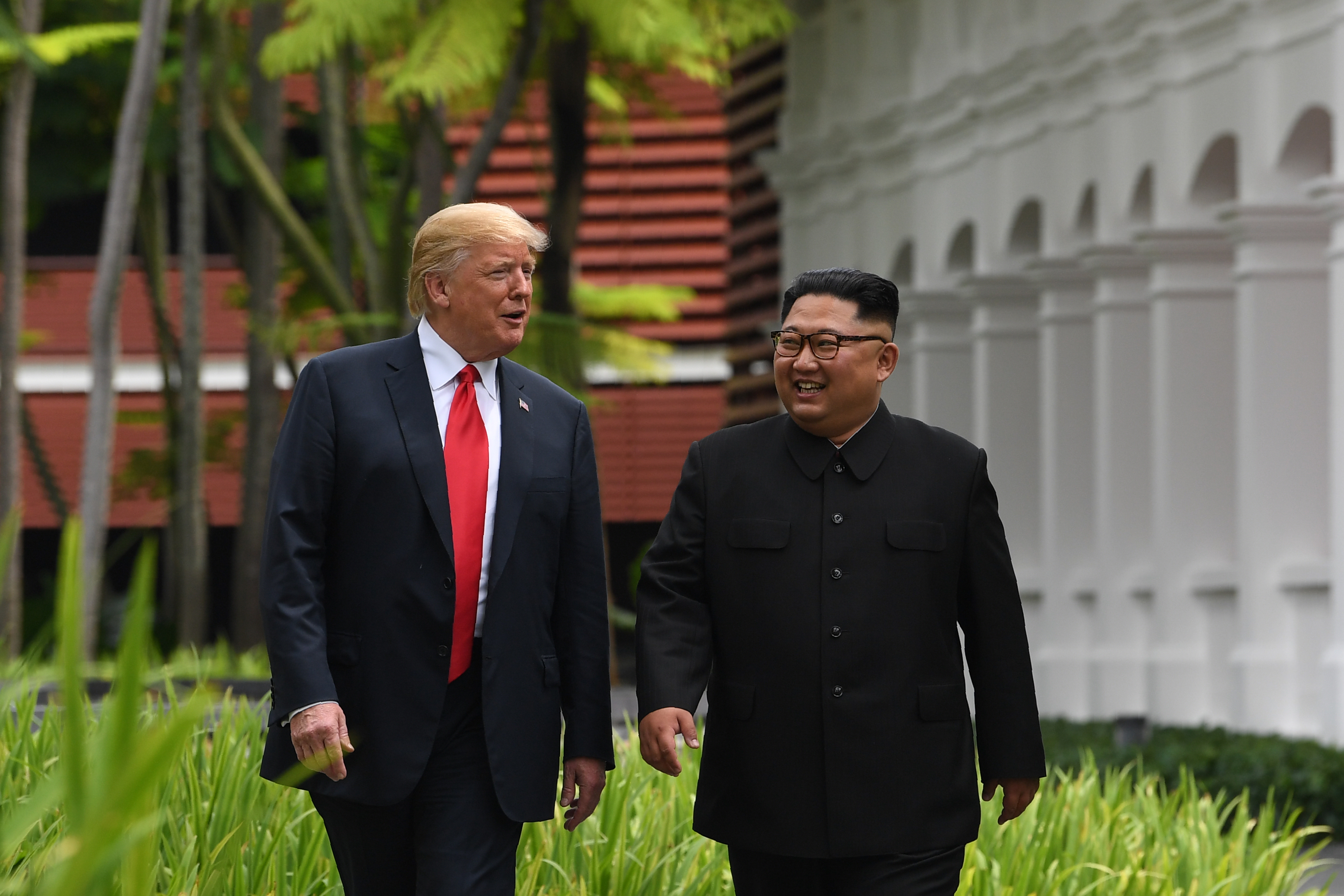US presidents and era-defining summits
Photo: () | ©AFP
Singapore (AFP) – Donald Trump hailed his meeting with Kim Jong Un as the start of a process that would rid North Korea of its nuclear weapons.
While experts on North Korea were largely underwhelmed immediately after the summit, most agreed that the very fact of their having met was potentially significant and could play out over the coming years.
Previous American presidents have also reached out to long-term foes, holding what turned out to be legacy-defining meetings.
Here are two of the most significant summits:
– Reagan and Gorbachev, 1986 –
Following a decades-long Cold War arms race that saw the United States and the Soviet Union amass tens of thousands of nuclear warheads, the two superpowers decided to sit down in October 1986 and discuss a radical proposal: the elimination of their nuclear arsenals.
US President Ronald Reagan and Soviet leader Mikhail Gorbachev met in Iceland’s capital in a bid to reach an agreement. The Reykjavik summit lasted two days but the talks collapsed. Washington refused to roll back development of its “Star Wars” missile defence project, which was unacceptable to the Kremlin.
In the years to come, however, the summit came to be seen as the harbinger of significant de-escalation. It led to a treaty the next year under which both Cold War powers would eliminate their short- and intermediate-range nuclear missiles. Thousands of these weapons were scrapped in what was the first major weapons reduction by the rivals.
Despite the failure to reach an agreement, Reykjavik is seen by many as a turning point in the Cold War. Gorbachev continued to push through with internal reforms he had started since coming to power, and the Soviet Union eventually collapsed in 1991.
– Nixon and China, 1972 –
The United States broke off ties with China when the communists, led by Mao Zedong, took over the country in 1949. The relationship remained in limbo for almost two decades, during which their forces squared off in the Korean and Vietnam conflicts.
Then Richard Nixon won the 1968 US presidential election and decided to reach out to Beijing.
It started with secret contacts to lay the groundwork for formal contact, including a covert trip by Nixon’s national security adviser Henry Kissinger in 1971.
A year later — in February 1972 — Nixon flew to China in what is widely considered one of the most important geopolitical events of the 20th century. The US leader met with the top Chinese leadership, including Mao and premier Zhou Enlai.
It kicked off formal contacts that led to full diplomatic ties in December 1978, and Washington withdrawing recognition from Taiwan. Nixon’s gamble is also seen by many as catalysing the end of communist China’s isolation and opening up to the rest of the world.
Disclaimer: This story has not been edited by Siliconeer and is published from a syndicated feed. Siliconeer does not assume any liability for the above story. Validity of the above story is for 7 Days from original date of publishing. Content copyright AFP.


